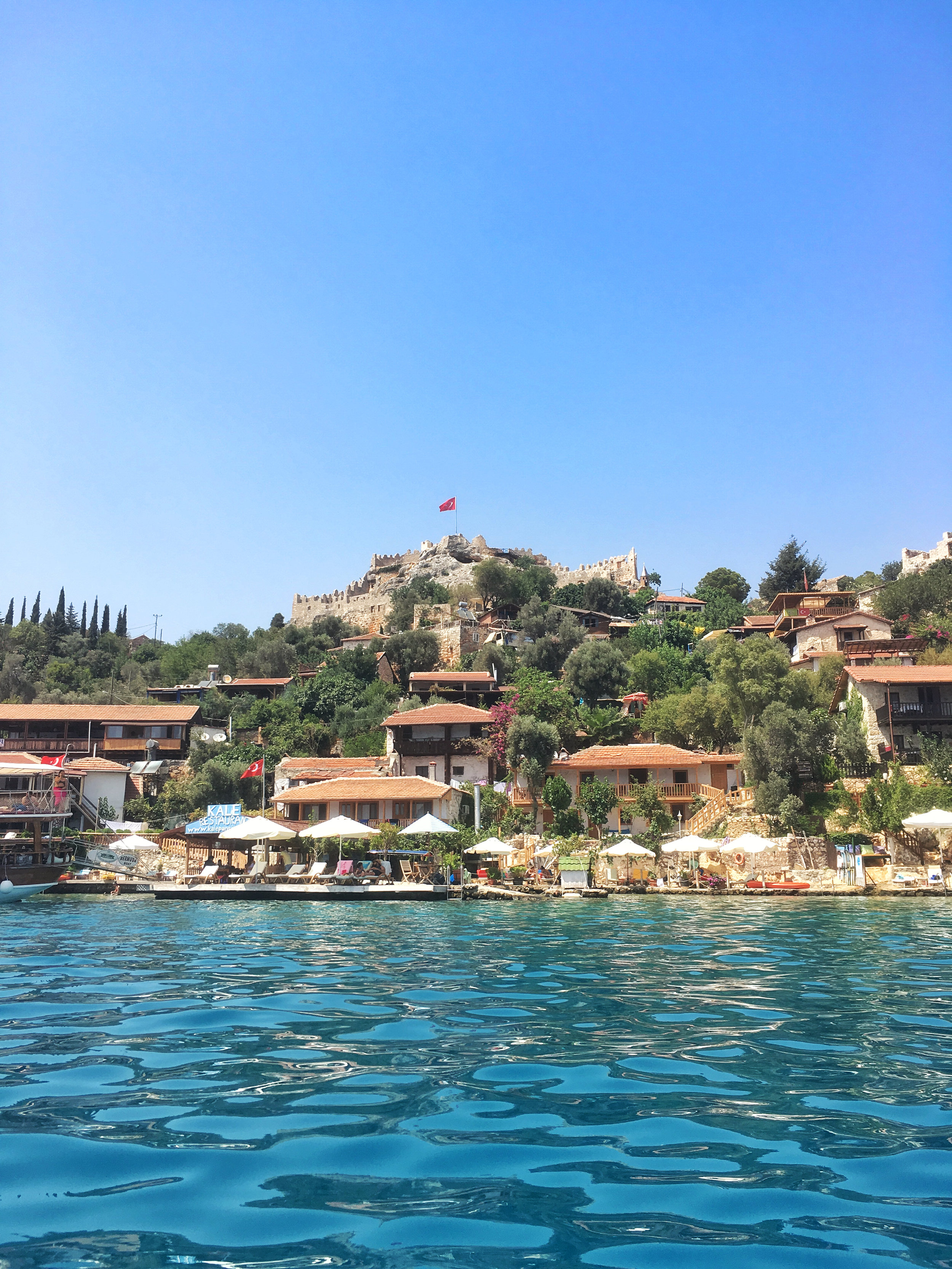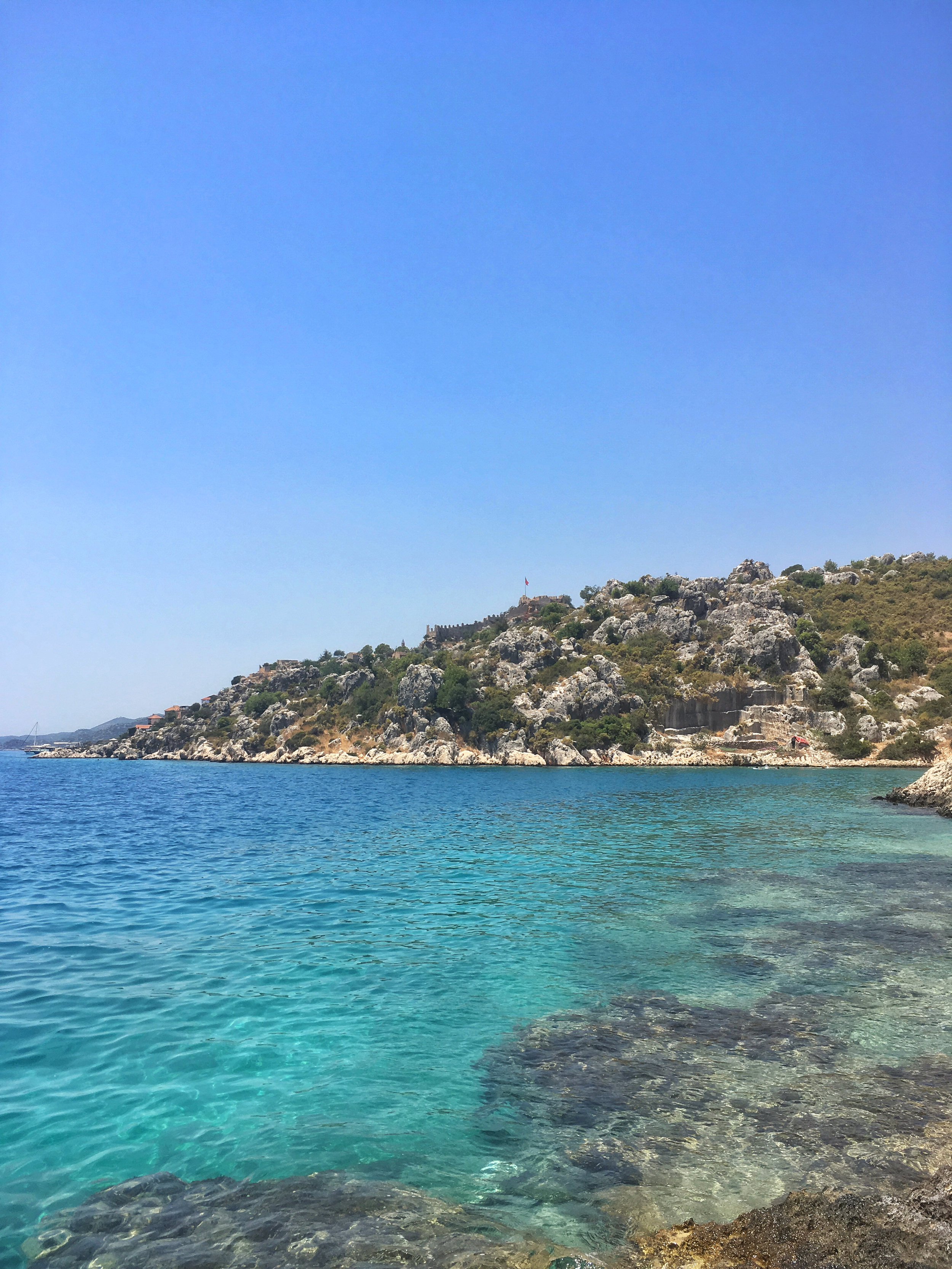Another long bus ride, some hitchhiking, and a few fierce bouts of dolmus fare bartering got me to the brink of a refreshing dip in the strikingly blue Mediterranean. I had exceptionally high hopes for the famed body of water. The vibrant color gradient had been adorning postcards since I entered Turkey, and the relentless heat made it all too appealing. Following a trail of internet forum posts I arrived to the Saban Treehouses in the town of Olympos to begin my coastal exploration. Sort of an unpolished bungalow situation, the tree houses offered private accommodation, breakfast, and a truly spectacular dinner each evening for a price that simply could not be passed up. From a budget backpacking, beach destination, stuff your face with tasty Turkish delights perspective, there is simply not a better deal on the planet. I settled in for a few days to rest some weary legs.
Getting settled into that bungalow life
Not too long ago Olympos was a place infamous for late night boozing and revelry lead by hordes of German, Russian, and French visitors. They were eager to party all night and work off the hangover in short shorts on the calm stone beaches. It has since been, for better or worse, shifted to a Turkish family destination with a low key relaxing vibe. A slight shake down occurs in route to the shore as each beach goer is forced to pay daily entry to a historic site that sits in between the edge of town and the coast; but the long hot walk passes quickly as an ancient Lycian city passes by. The Lycians, in some historic sense, had laid claim to the beautiful and strategic coastal zone of modern Turkey by the 15th century BC and developed a comprehensive network of roads and trails linking various settlements of the civilization during their incorporation into the Acheamenid and subsequently Greek Empire. Now known as the Lycian Way, 500km+ of this ancient pathway has been trail marked to create a spectacular long distance coastal trek over uninhabited headlands and through ancient ruins. Though the fierce July heat made a multi-day endeavor all but impossible, I was still excited to take a walk along this supposedly stunning ancient highway. I embarked early one morning, having scoped out three secluded coves along the way and as soon I made it to a proper stretch of the path I saw the Lycians had a keen eye for real-estate investment. The winding trail, bending with the rocky cliffside was a spectacular contrast of green flora, rusty rock, and bright blue water. Upon reaching the first cove, I realized that the Lycians also understood the concept of buy low, sell high as they would no longer like what they found.
Pretty from far, but far from pretty
After two hours of sweaty and buggy hiking I had landed on a beach with no people or footprints but the mark of modern society was everywhere. Black sand beach was loaded with crumbled styrofoam, diluting the color to an off-putting grey. The recent high tide lines were vibrantly charted by torn up bits of plastic bags, wrappers, and other packaging. What from a far looked like a rocky boarder on the tree line turned out to be nothing more than a collection point for plastic bottles and other discarded containers. I thought perhaps this cove had a particularly bad angle to the prevailing winds. Perhaps this was a combination of decade’s worth of trash pileup and a government who simply wasn’t going to clean what happened long ago. But as I continued along the trail it became abundantly clear that offshore dumping was heading this way, and there was no clean beach to be found. There had been no shortage of terrible waste management and pollution events throughout my travel, but this one hit me more than any I had previously encountered. This was not an area of high foot traffic, there had never been a huge draw to these coves, nor would there be any cleanup effort made in the foreseeable future. Unbeknownst to the trash makers, a slice of paradise had been destroyed. I didn’t continue further along the trail. I had seen enough for the day and returned to town properly demoralized. I wasn’t sure if the rest of the Turkish coast would look like this, but if so I had no bid for it.
A quirky guy in his early fifties with striking resemblance to a Jersey Shore lifer decided to pick me up from a stranded highway location. His look: a bit overweight, sweaty, wife beater tank, rocking wraparound shades was in complete contrast to his friendly manner and eagerness to chat through the language barrier. After driving me for quite some time, he detoured off his route 15km to drop me at the door of my accommodation and out of the roaring sun. I offered a round of tea, a common form of thanks, and he gladly accepted. He came along to explore the small town before swapping Facebook info and parting ways.
The sun sets on a the boats of Ucagiz
In Üçagiz (Ooch-eye-eez) a fresh breath of air blew off the water. 100km west from Olympos true Mediterranean beauty was revealed and my fears of complete contamination alleviated. The small town floats on a quaint bay opposite famed Kekova Island where a sunken Lycian city, rattled loose from its cliffside abode by an earthquake circa 200 AD, snoozes below the kaleidoscope of salty blue water. I relaxed into the slow pace of beach time and made a leisurely exploration of the surrounding villages. While here I crossed the milestone of my 28th birthday; a humbling affair solidifying the end of my mid-twenties. As per my usual birthday routine, I spent the event at the beach and to celebrate the affair Abi procured her and I a kayak with which to explored the rocky coast and meet its underwater inhabitants. Most accommodation in the area has free boat transfer so with a single day left on the coast I was dropped at a private swimming dock out in the bay. An afternoon of lounging and swimming around in the pristine water left me satisfied with my beach time birthday and ready to get back on the move. I took one last deep sleep in the salty air and started off towards the northern cultural hubs of modern Turkey and the ancient world.



